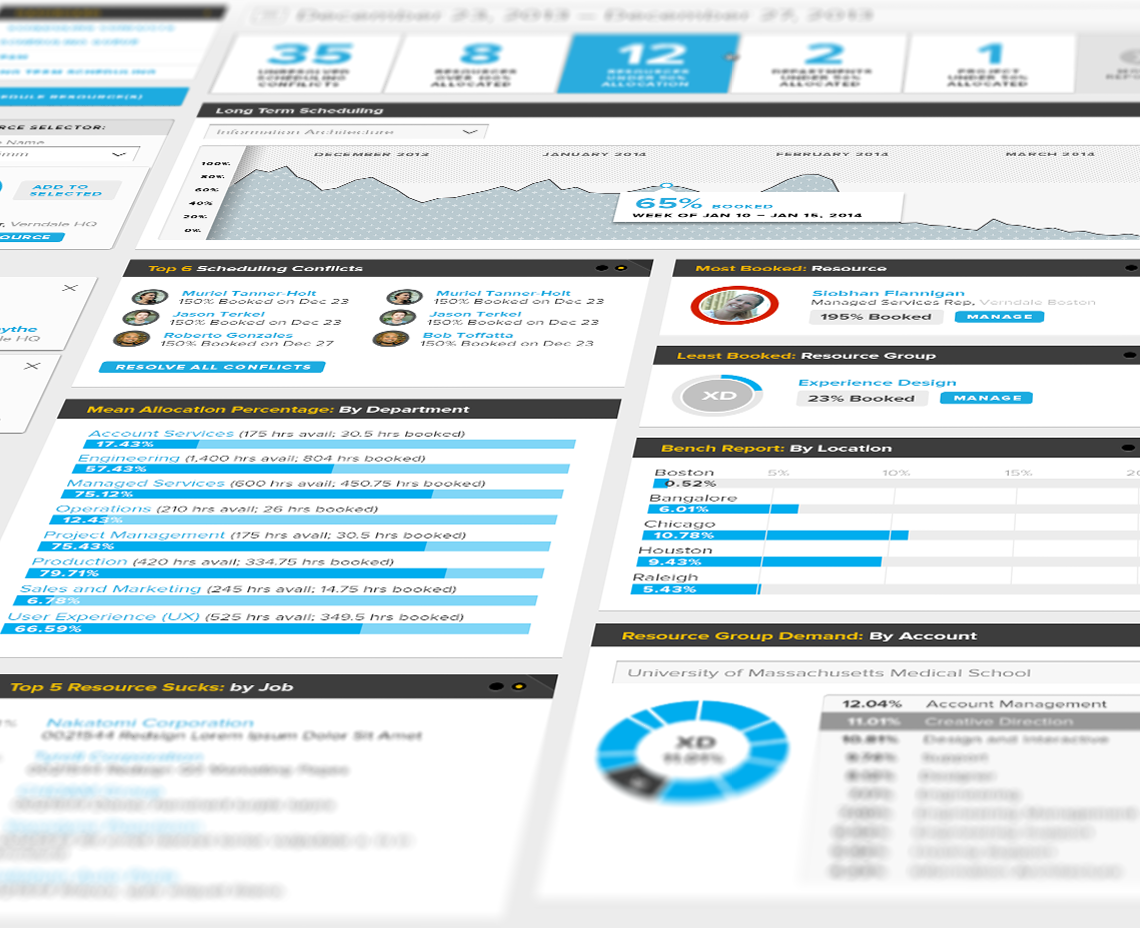A big swing at the complex problem of mid-size digital agency management
Challenge:
When I worked for Verndale, it was a mid-size digital agency. Like any agency, they lived and died by billable hours. It was crucially important that designers, engineers, program managers, and everyone else was able to account for their time, to ensure that they were being paid for the work that they performed.
Like many agencies that started in the early 2000’s, they had custom-built their own solution to this problem. Nobody really enjoyed using it, but it had been serviceable enough for ten years or so.
After a few modest attempts to increase the usability of the system, one of the founders of the company decided that it was worth thinking bigger.



Approach:
I was recruited into this effort by the front end developer who had been tasked with creating a vision for what a next-gen platform for time management and tracking could look like. When we first started working together I would have had no way of knowing how broad our remit would become, and just how much leash they were willing to give us to rethink the way that the agency did business.
We started with pencil and paper: mapping out the connections between different parts of the business, and how that informed the revenue model. From there we moved into paper prototypes, and spent time walking each other through them, pointing out the flows, and making changes. We took over a corner of the office that started to look like an evidence board. Eventually we compiled the core concepts, wireframes, and ideas into a proposal that we presented to the founders to get their ideas, feedback, and blessing to move forward.





What Went Well:
At its core, the updated Titan system was an attempt to integrate project and resource management into one system. Our hypothesis was that by creating a common platform that would provide visibility into both budget and capacity, we would be able to streamline many downstream processes, including billing, account management, knowledge management, reviews, and more.
It was wildly ambitious, and it will probably come as no surprise that it wasn’t exactly a runaway success. I’ll get to that in a moment, but there were a few notable successes:
I learned that a strong partnership between design end engineering can result in some pretty amazing concepts, but that we needed a product manager to keep our feet on the ground.
I learned more about creating a consistent and coherent design language across a suite of interconnected applications
I learned about managing up




What could have gone better:
By creating a large, interconnected vision, we put ourselves in a tough situation. We didn’t want to close any of the doors ahead of us, but we knew that we did need to provide something of value in the near term.
We were able to ship a platform with authentication and permissioning, a functioning knowledge base, as well as a the core elements of project management before the funding was pulled. In the years since, I’ve done a lot of thinking about the many reasons why this fell apart. Here are some of the highlights:
Brought others onto the team earlier
Designed for more flexibility: we took mistook ourselves for the users
Tested more often, in fact, having any kind of research would have been wonderful
Delivered value more often
Stopped designing pieces that weren’t critical to the core function
Focussed on mobile use cases and opportunities






















